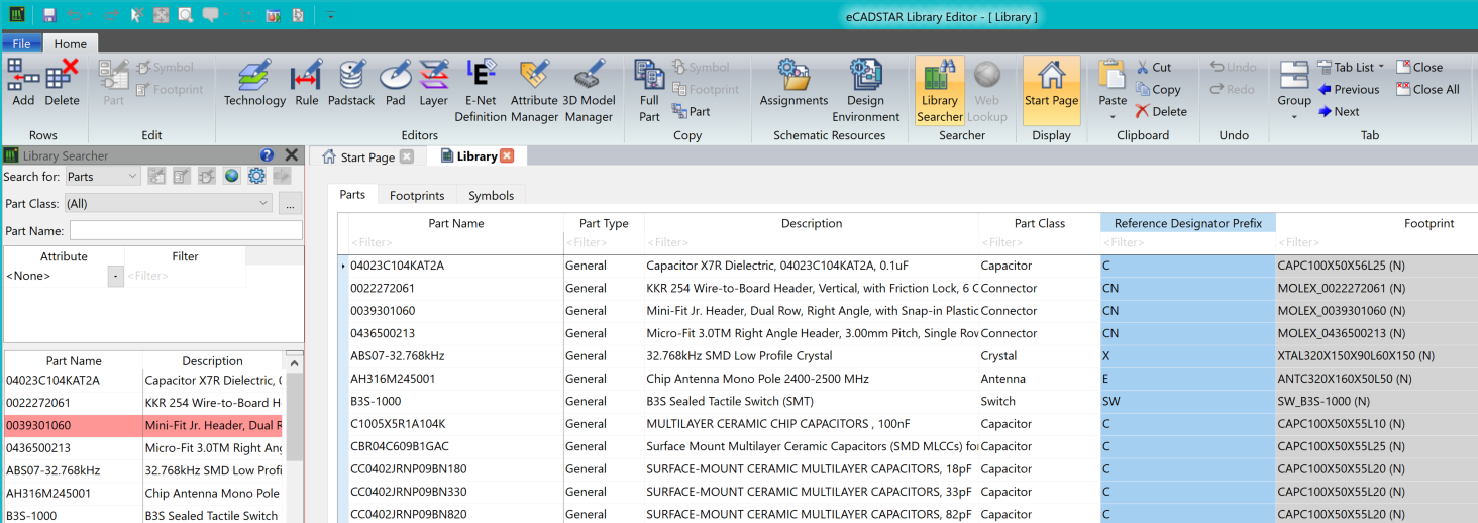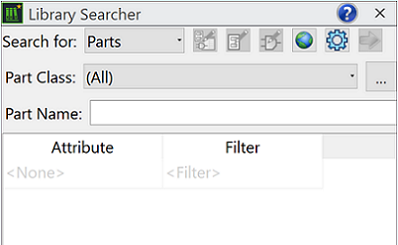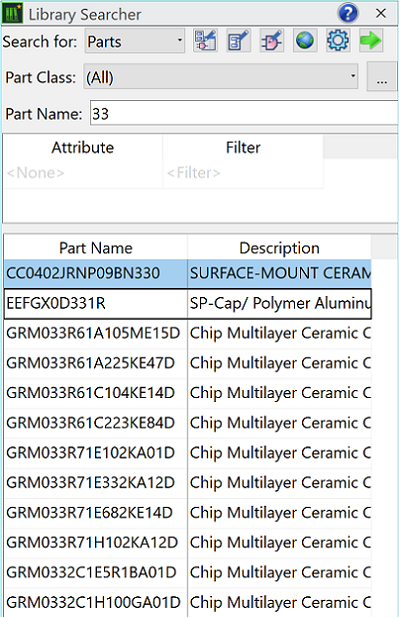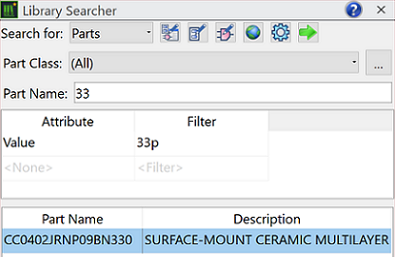Task 1: Using the Library Searcher
In this section, you will explore the Library Searcher. You can search the library using any attribute, which can be customized. The following items can be searched for in the library.
- Parts
- Footprints
- Symbols
- Part Class
- Part Name
- Attributes
Task 1: Using the Library Searcher
In this task, you will learn how to use the Library Searcher.
- From the eCADSTAR program group, select and launch the eCADSTAR Library Editor.
- On the File tab in eCADSTAR Library Editor, select Open Library to open the default library at the following location: C:\Users\Public\eCADSTAR\eCADSTAR [version]\Library.
- If the Library Searcher is not displayed, then click Library Searcher on the eCADSTAR Library Editor ribbon. This is shown below.

Figure 1: Opening the Library Searcher
- In the Search for box, select Parts.

Figure 2: Searching for Parts
- In the Part Name box, enter the value "33". All available parts that contain this value are displayed.

Figure 3: The Available Parts Display Window
- You can also use system or user attribute filters as follows:
- In the Attribute column, click the expand arrow and select Value.
- In the Filter column, type "33p" and press Return. The 33 Pico Farad capacitor is displayed.

Figure 4: Using Attribute Filters
- Clear the Part Name box.
- In the Part Class box, select Jumper. All jumpers in the library are displayed.
- Experiment with the Search for and Part Class boxes to search for other parts, footprints or symbols.
- You can select an item in the Library Searcher panel, and click Send to send it to the relevant editor (for Schematic Editor and PCB Editor).
- If you drag the side of the Library Searcher panel to display it in narrow format, then the attributes and a preview are shown in the displayed Attributes dialog.
- If you drag the side of the Library Searcher panel to display it in wide format, then the preview is displayed in the Library Searcher panel.
- Part data can be downloaded from an Electronic Component Information Provider using the Web Lookup service, and loaded directly into the library.
This task is demonstrated in the following video.

